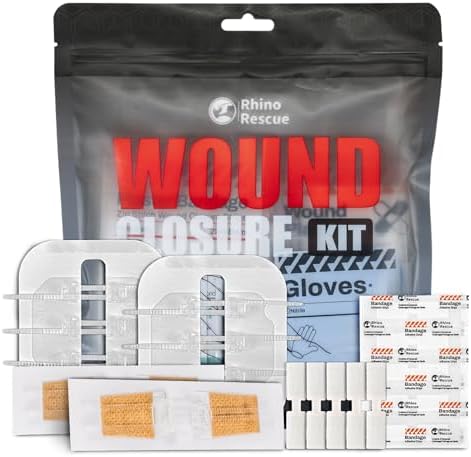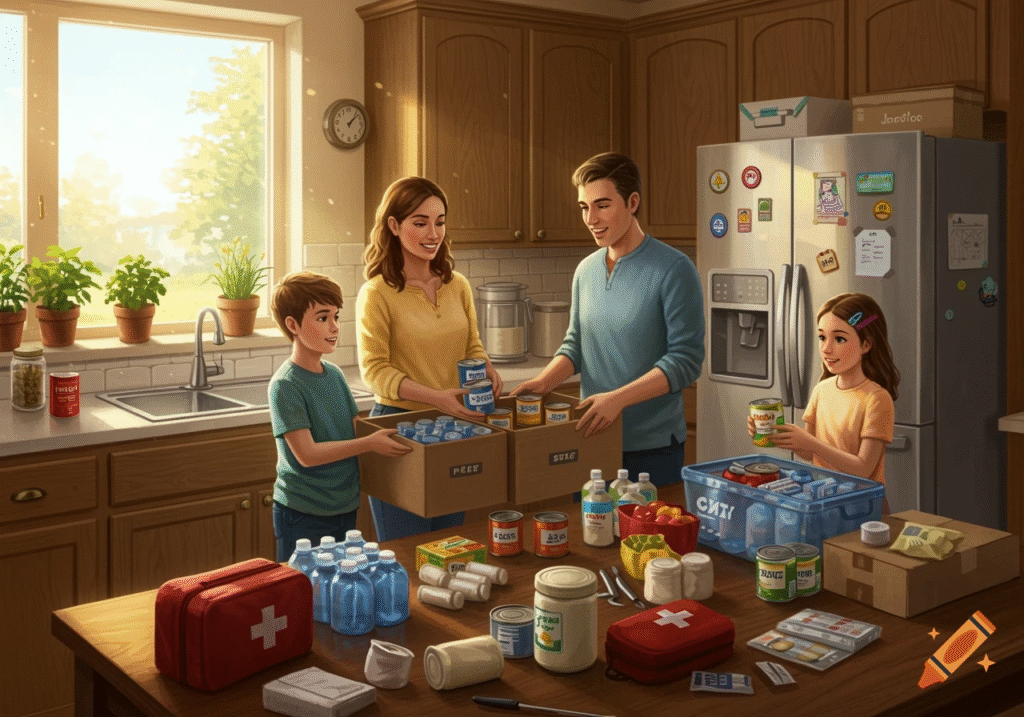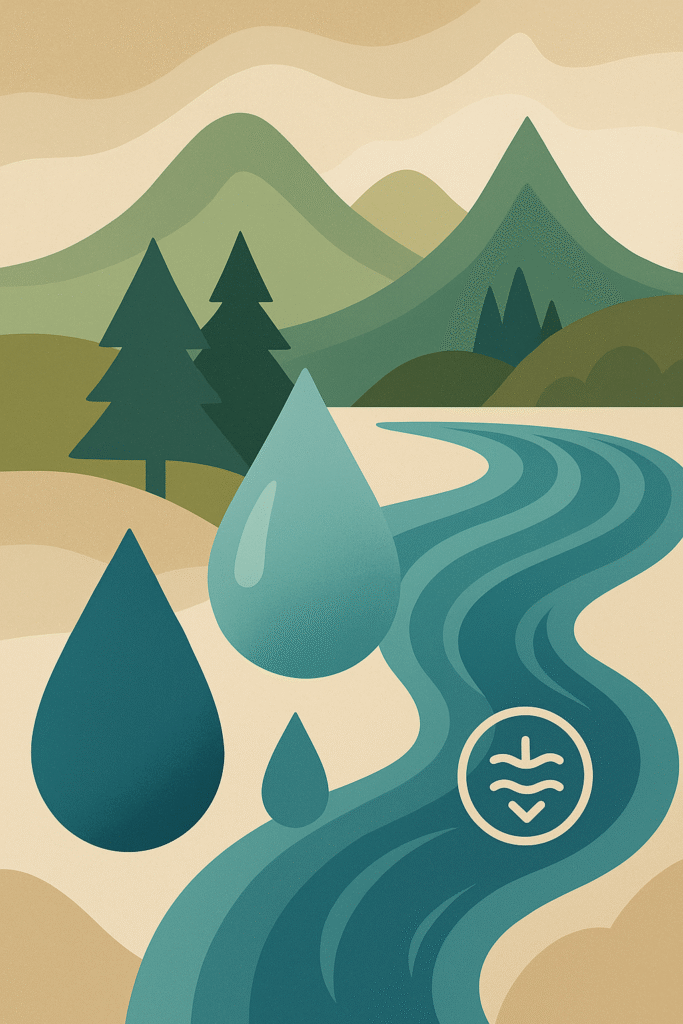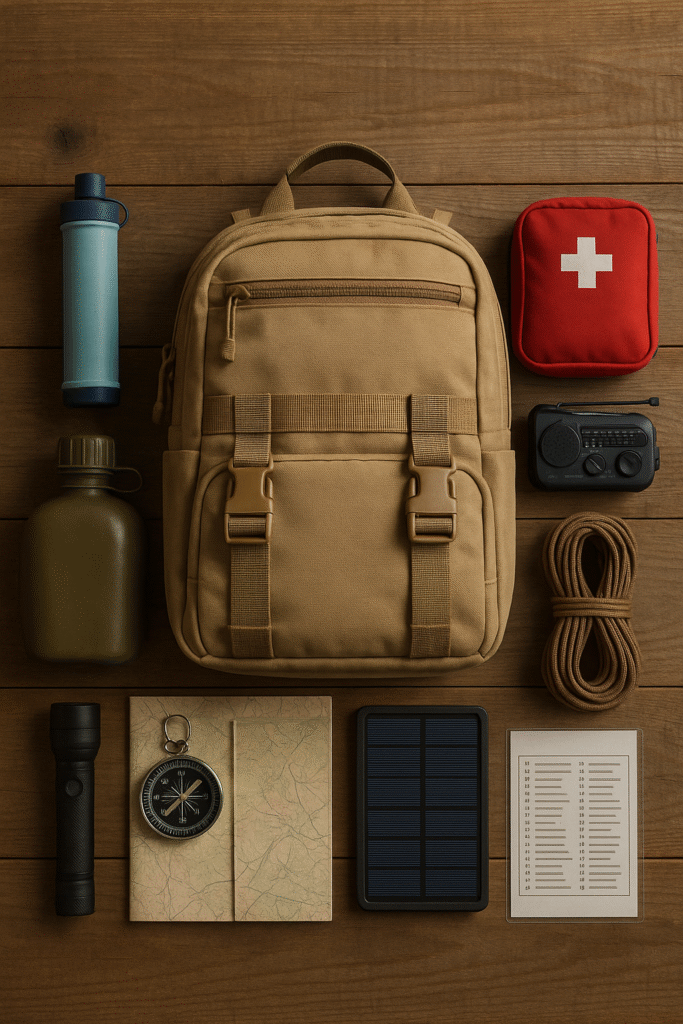First Aid Supplies For Preppers
When you’re miles from a hospital and something goes wrong, a good med kit isn’t just handy—it’s the difference between a bad day and a tragedy. Over years of guiding and teaching, I’ve built and rebuilt my kits until I arrived at a system that works. Here are some first aid supplies for preppers that I never leave home without, a field‑tested tip for each, and a reliable product you can snag on Amazon.
1. Sterile Bandages & Dressings
This is one of the most essential first aid supplies for preppers. Nothing is more basic—or more important—than the right bandage. Small adhesive strips for minor cuts, gauze pads and rolled gauze for bigger wounds, and elastic wraps to secure dressings or support sprains all earn a place in my kit. Non‑stick pads are gold for burns and nasty lacerations.
Pro Tip: Pack more than you think you’ll need. In a real emergency, you might be working on more than one injury—or more than one person.
👉 Recommended: Dealmed Sterile Gauze Pads (100‑count) are individually wrapped, super absorbent, and pack down small. Click here to buy.
2. Antiseptics & Disinfectants
A dirty wound invites infection. Wipe it clean with alcohol pads, iodine, or hydrogen peroxide, then smear on antibiotic ointment. Keep a little bottle of hand sanitizer for your own hands and tools.
Pro Tip: Single‑use antiseptic wipes and ointment packets prevent cross‑contamination and won’t leak all over your kit.
👉 Recommended: Betadine Povidone‑Iodine Solution and Neosporin Original Antibiotic Ointment make a great one‑two punch for cleaning and protecting cuts.
3. Pain Relievers & Anti‑Inflammatories
Cuts and scrapes aren’t the only things that slow you down. Carry ibuprofen for pain and inflammation, acetaminophen for fevers, and a couple aspirin for cardiovascular emergencies.
Pro Tip: Stash meds in a waterproof pill vial and mark the dosages with a permanent marker so there’s no confusion under stress.
👉 Recommended: A travel‑size bottle of Advil (Ibuprofen) and Tylenol Extra Strength tablets will serve you well.
4. Trauma Supplies
Massive bleeding is a killer. A combat‑tested tourniquet, hemostatic gauze, and trauma shears are non‑negotiable when you’re hours from help.
Pro Tip: Practice applying a tourniquet before you need it. Muscle memory matters when seconds count.
👉 Recommended: The North American Rescue CAT Gen 7 Tourniquet paired with QuikClot Z‑Fold Hemostatic Gauze is the standard for a reason.
5. Splints & Immobilization
Sprains, fractures and dislocations are common when traversing rough terrain. Moldable splints and triangular bandages let you immobilize an arm or leg until you can get proper care.
Pro Tip: Elastic wraps do double duty—use them to secure a dressing, stabilize a sprain, or hold a splint in place.
👉 Recommended: A 36″ SAM Splint and a couple multi‑pack triangular bandages weigh almost nothing and adapt to any limb.
6. Thermometer & Fever Management
Illness strikes when you least expect it. A small digital thermometer tells you if that malaise is a low‑grade fever or something more serious. Throw in a few instant cold packs for reducing fever or swelling. Don’t forget one of the most overlooked first aid supplies for preppers.
Pro Tip: Bring fever reducers (see No. 3) and electrolyte packets; dehydration and fever often go hand in hand.
👉 Recommended: The Vicks SpeedRead Digital Thermometer and Dynarex Instant Cold Packs are reliable and inexpensive.
7. Wound Closure Supplies
Sometimes a butterfly strip is all you need to close a gash; sometimes you’ll wish you had sutures. Steri‑Strips and adhesive skin glue bridge the gap when you can’t get to a doctor right away.
Pro Tip: Only close a wound after you’ve cleaned it thoroughly. Sealing in debris is a recipe for infection.
👉 Recommended: 3M Steri‑Strip Reinforced Skin Closures hold tight but peel off easily when it’s time to re‑evaluate.
8. First Aid Manual or Guide
Even seasoned outdoorsmen forget under stress. A pocket‑sized guide with step‑by‑step instructions on everything from CPR to splinting buys time and confidence when seconds count.
Pro Tip: Choose a waterproof, tear‑resistant manual; sweat, rain and dirt are hard on paper.
👉 Recommended: The American Red Cross First Aid & Safety Handbook is concise, durable and covers all the basics. You might also like this Guide To Surviving Without a Doctor.
9. Personal Protective Equipment (PPE)
Protect yourself so you can help others. Gloves, masks and eye protection keep bodily fluids and contaminants at bay.
Pro Tip: Stash PPE in an exterior pocket for quick access—you don’t want to dig through your kit while someone is bleeding.
👉 Recommended: MedPride Nitrile Exam Gloves and 3M N95 Respirators provide solid protection without taking up much room.
10. Medications & First Aid Supplies for Preppers With Specific Needs
A first‑aid kit is only complete when it’s personal. Include any prescription meds you or your loved ones depend on. For general issues, throw in antihistamines, antacids and oral rehydration salts.
Pro Tip: Check expiration dates twice a year and rotate stock. Meds don’t do any good if they’ve lost their potency.
👉 Recommended: Benadryl Allergy UltraTabs handle everything from minor allergic reactions to hives, while DripDrop ORS Electrolyte Powder packets keep dehydration at bay.
Final Thoughts on First Aid Supplies for Preppers & A Simple Checklist
- Inspect & Restock your kit every six months.
- Train: take a first‑aid/CPR class and practice with your gear.
- Customize: build to your household’s unique needs.
- Stay Organized: label pouches for quick access in an emergency.
The best gear in the world can’t help you if you don’t know how to use it. A rugged, well‑stocked first‑aid kit, paired with know‑how, is the safety net that lets you venture into the unknown with confidence.
Click Here To Check Out My Suggested Medical Survival Guide







Pingback: How to Start Prepping Without Overwhelm
Pingback: 8 Survival Fishing Tools That Actually Work
Pingback: 10 Canning Tools Every Prepper Needs